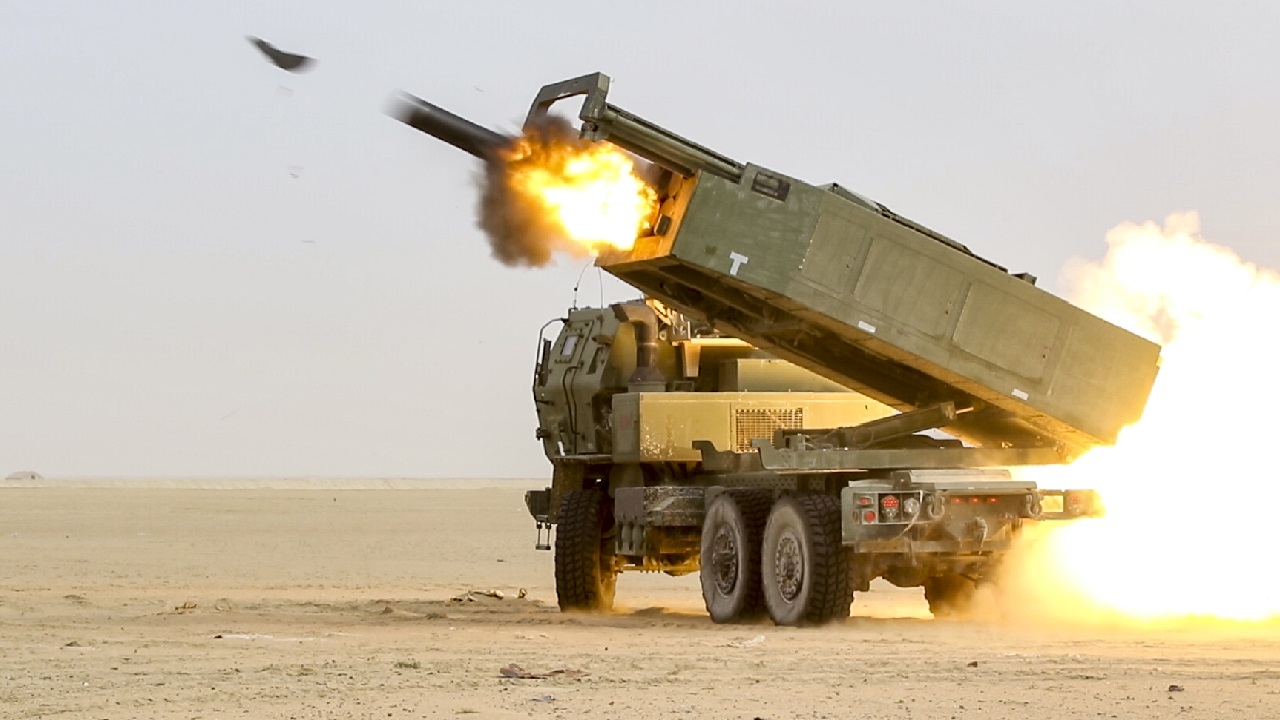Poland Has HIMARS: During the 17th century, Poland – actually the Polish-Lithuanian Commonwealth – was a significant power in Eastern Europe.
Though it eventually saw decline and partition and even disappeared entirely from the map for more than a century, the Polish people were seen as fearsome warriors serving in the ranks of other powers.
That spirit could be very much seen alive and well with the modern Polish military.
Its once famed Winged Hussars may not lead it, but instead, Poland could advance into battle with advanced main battle tanks (MBTs) from Germany, the United States, and South Korea.
In addition, it is now being equipped with the U.S.-made M142 High Mobility Artillery Rocket System (HIMARS), the light multiple rocket launcher was developed in the early 1990s as a private venture by Lockheed Martin Missiles and Fire Control.
Initial Batch of HIMARS Delivered
Last week, Lockheed Martin announced that it had successfully delivered the initial shipment of the launchers to Warsaw, while subsequent deliveries will be made later this year, to further provide additional capabilities to Poland’s military.
“The combat-proven HIMARS will provide credible deterrence against aggression and significantly increase capability of the Polish Armed Forces and their NATO allies,” said Jay Price, vice president of Precision Fires for Lockheed Martin Missiles and Fires Control.
Under a 2019 contract, Warsaw will spend around $414 million (380 million euros) to purchase 18 advanced combat HIMARS launchers and two HIMARS training launchers, with ammunition and related equipment. The deal also included logistics and training.
The launchers will go to the 1st Artillery Brigade in northeastern Poland, the Associated Press reported.
“Their task will be to deter (an) aggressor and strengthen Poland’s armed forces on the nation’s and NATO’s eastern flank,” said Polish Defense Minister Mariusz Blaszczak.
The HIMARS, which can carry one launch pod containing either six Guided MLRS (GMLRS)/MLRS rockets or one Army Tactical Missile System (ATACMS) missile, is noted to be a “shoot and scoot” platform. It can arrive at a designated launch site, shoot its payload and roll out before the enemy can return fire. Depending on the armament, the M142 HIMARS has a range of 5.6 miles to upwards of 300 miles.
Homar-A Program
Lockheed Marin also announced that Poland’s Armaments Agency of the Ministry of National Defense is expected to invite the company to negotiate a Framework Agreement for the Homar-A program. Under Homar-A, Lockheed Martin with Polish Industry will integrate key components of the HIMARS rocket launcher on a Jelcz 6×6 truck. The negotiations will also include a discussion about the Polish production of munitions.
“The development of industrial partnership under Homar-A initiative marks another major step in our engagement to strengthening Poland’s economic growth and security through partnerships with local industry base. We’re looking forward to jointly create a safer tomorrow for Poland and the entire region,” said Robert Orzyłowski, Lockheed Martin director Poland, Central and East Europe.
Lockheed Martin has been a strategic partner for Poland’s national defense, industry, and economy, and has invested $1.8 billion (USD) in Poland over the last 10 years. The defense contractor’s current in-country operations in the Eastern European nation also sustain 6,700 high-value Polish jobs, of which 1,500 are with aircraft manufacturer PZL Mielec, a Lockheed Martin company and one of Poland’s leading defense exporters.
Russia Watch Out for HIMARS and More
Poland is now on track to become a major European powerhouse. As Politico reported last year, Poland already has more tanks and howitzers than Germany. More importantly, it is on track to have a much larger army – and is on target to have 300,000 troops in service by 2035.
That would double the current Polish military of 150,000, which includes 30,000 belonging to a new territorial defense force that was set up in 2017.
Moreover, while other nations – including Germany – are struggling to recruit new troops, Poles seem more eager to serve.
“The Poles have a much more positive attitude towards their military than Germany because they had to fight for their freedom,” Gustav Gressel, a former Austrian military officer and security scholar now with the European Council on Foreign Relations told Politico in November. “In military circles no one questions the quality of the Polish army.”
MORE: Is Russia’s Su-57 Felon Stealth Fighter a Total Bust?
MORE: Merkova: Israel Has A Super Tank
Author Experience and Expertise
A Senior Editor for 19FortyFive, Peter Suciu is a Michigan-based writer. He has contributed to more than four dozen magazines, newspapers, and websites with over 3,200 published pieces over a twenty-year career in journalism. He regularly writes about military hardware, firearms history, cybersecurity, politics, and international affairs. Peter is also a Contributing Writer for Forbes and Clearance Jobs. You can follow him on Twitter: @PeterSuciu.

